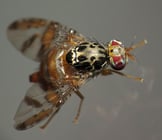Though it’s common knowledge that fruits and vegetables are part of a balanced diet, life science researchers continue to find health benefits in these foods beyond what anyone expected. Take the case of Ohio State University, for example, who three years ago found out that apples can lower levels of bad cholesterol. A new study from the University of Michigan, Ann Arbor suggests that bananas can fight off viruses we’d otherwise be susceptible to.
Read MoreTags: University of Michigan Ann Arbor, 2015, Ann Arbor, BioResearch Product Faire Event, MI, UMich
Yeasts are valuable as both tools and allies in the life sciences. We saw how yeast taught Ann Arbor researchers about DNA and showed Urbana-Champaign researchers how to save bats from a deadly disease. Now a team at the University of Michigan at Ann Arbor is learning from yeasts how to slow the onset of another deadly disease, namely cancer.
Read MoreTags: University of Michigan Ann Arbor, 2015, Ann Arbor, BioResearch Product Faire Event, MI, UMich
 When dieting or eating foods with artificial sweeteners, many people do not get the feeling of being full that they get when eating foods with real sugars. But how can we distinguish between between these two sweeteners, to feel full or not?
When dieting or eating foods with artificial sweeteners, many people do not get the feeling of being full that they get when eating foods with real sugars. But how can we distinguish between between these two sweeteners, to feel full or not?
Tags: University of Michigan, Midwest, 2015, Ann Arbor, BioResearch Product Faire Event, MI, UMich, Neurons, Artificial Sweetener, Fruit Fly, Sugar
Though it is not studied very heavily, microRNA plays a crucial role in several of life’s functions. We saw in a previous Science Market Update post how a strand of microRNA can decide whether or not embryonic tissue develops with defects, and how an Ohio State University research team used this information to develop methods of preventing such defects. Now a group of researchers at the University of Michigan, Ann Arbor has developed a novel way to pinpoint the previously elusive particles of microRNA.
Read MoreTags: University of Michigan Ann Arbor, 2015, Ann Arbor, BioResearch Product Faire Event, MI, UMich
Despite our advances in dental hygiene technology and promotion of healthy habits, plaque continues to plague our nation. Surveys indicate that nearly 39 percent of adults in the United States have periodontitis, also known as gum disease. At the University of Michigan, Ann Arbor, a team of bioscientists is working to find more effective ways to destroy plaque.
Read MoreTags: University of Michigan Ann Arbor, 2015, Ann Arbor, BioResearch Product Faire Event, MI, UMich
DNA is a lot like a genetic recipe: change up the order of the ingredients, and you might get an entirely different dish. At the University of Michigan, Ann Arbor, bioresearchers are cooking up some new results that better explain the effects of modifying DNA and what that means for evolution as a whole.
Read MoreTags: University of Michigan Ann Arbor, 2015, Ann Arbor, BioResearch Product Faire Event, MI, UMich
Personalization is all the rage in both the holiday shopping scene and in the realm of cancer treatment. The truth is, everyone wants to feel special, like his or her needs and desires are being specifically catered to. Bringing a new level of personalization to the cancer scene is the University of Michigan, Ann Arbor, where researchers are developing a way to grow a patient’s cancer outside of their body so that they can better monitor and test it.
Read MoreTags: Midwest, Michigan, University of Michigan Ann Arbor, 2015, UMich
Though the word “photosynthesis” is less than 150 years old, modern society considers the process largely fundamental and simple. The truth is, though researchers make attempts to replicate and optimize photosynthesis, as we’ve seen UIUC researchers do, it is still not fully understood. The puzzles behind the inner workings of photosynthesis have caught the attention of biophysicists at the University of Michigan, Ann Arbor, and have led them to unravel some of the mysteries in order to enhance the effectiveness of artificial photosynthesis methods.
Tags: University of Michigan, 2014, Midwest, Ann Arbor, BioResearch Product Faire Event, MI, UMich
What does a cell do when it can’t get the food it needs? In the process of autophagy, it takes advantage of the closest food around; namely, itself. Autophagy is known to play a role in many human diseases but the nature of said role is somewhat open to debate. Hoping to shed some light on the matter, bioresearchers at the University of Michigan, Ann Arbor have found a genetic link that allows for regulation of autophagy.
Tags: University of Michigan, 2014, Midwest, Ann Arbor, BioResearch Product Faire Event, MI, UMich
Biotechnology researchers are beginning to unravel the effects of different breeding grounds on cell cultivation. We saw an example of this last year when OSU bioresearchers developed a titanium “shag carpet” which dramatically increased cell proliferation. In a similar vein, researchers at the University of Michigan, Ann Arbor have found a particular type of surface that helps stem cells decide what to grow up to be.
Tags: University of Michigan, 2014, Midwest, Ann Arbor, BioResearch Product Faire Event, MI, UMich

